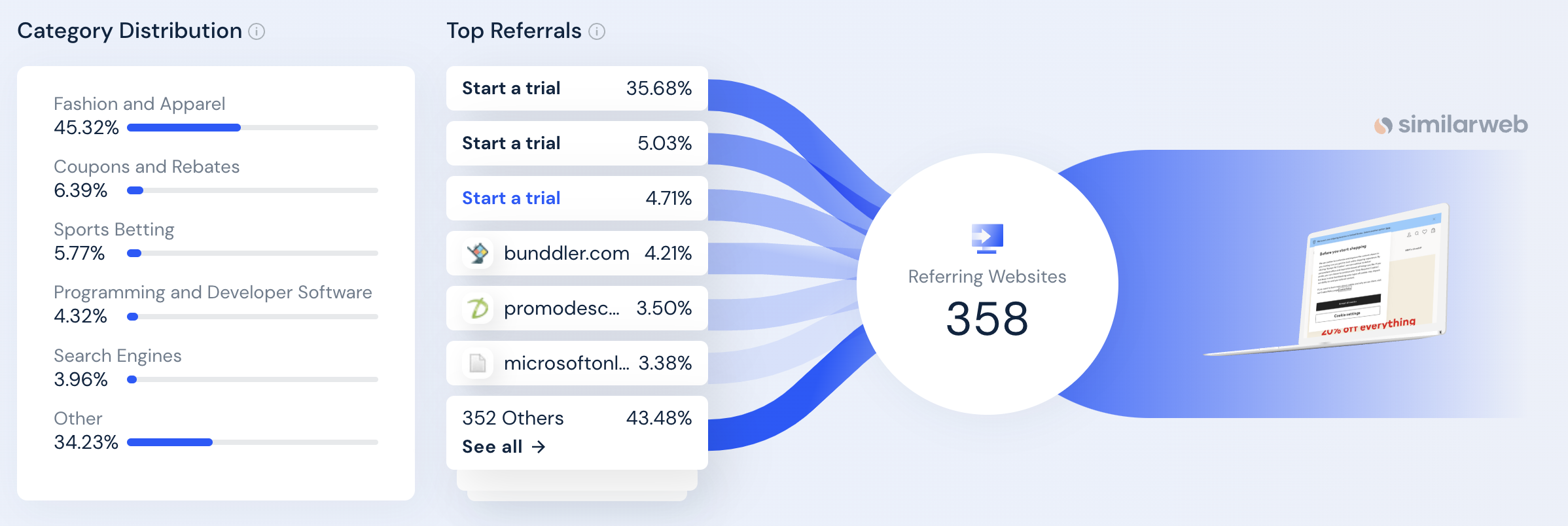Introduction:
In the competitive world of fashion retail, H&M has emerged as a dominant player, known for its quality styles at affordable prices. One of the key factors behind their success is their strategic implementation of SEO (Search Engine Optimization) and digital marketing techniques. In this blog post, we will explore how H&M utilized these strategies to propel itself to the industry’s top.

Company Overview:
H&M, founded in 1947 and headquartered in Stockholm, Sweden, has become a global fashion and apparel brand with a sustainable approach. With more than 10,001 employees and annual revenue exceeding $1.0 billion, H&M has established itself as a leader in the lifestyle industry.
Website Performance and Ranking:
H&M’s website, hm.com, has witnessed remarkable success in its performance and ranking. With a total of 103.2 million visits, an average visit duration of 5 minutes and 9 seconds, and 8.23 pages per visit, it is evident that H&M’s online platform is engaging and captivating for its audience. The bounce rate of 38.70% indicates that a significant portion of visitors are interested in exploring multiple pages on the website. Moreover, hm.com’s global ranking has consistently improved, moving from 293 to 247 over the last three months.
Geography and Audience Targeting:
H&M’s popularity extends across various countries, with the United States, Poland, Germany, the United Kingdom, and Canada being the top countries contributing to hm.com’s traffic. This global reach showcases the brand’s ability to resonate with diverse audiences. Additionally, the demographic breakdown of H&M’s audience reveals a 67.30% female and 32.70% male composition, with the largest age group being 25-34-year-olds.

Audience Interests and Competitors:
hm.com’s audience exhibits a strong interest in lifestyle, fashion, and apparel, reflecting the brand’s core offerings. Zara.com emerges as H&M’s top competitor, highlighting the stiff competition in the industry. Monitoring emerging competitors is crucial for H&M’s sustained success.

Marketing Channels and Referral Traffic:
Organic search remains the primary traffic source for hm.com, contributing 48.47% of desktop visits. Direct traffic is the second-largest source, accounting for 34.78% of visits. However, the potential of referral traffic remains untapped. Exploring referral partnerships and collaborations could be a growth opportunity for H&M.
Keywords and Referral Traffic:
H&M’s brand recognition is evident from the top keywords associated with hm.com, such as “h&m,” “hm,” and “h and m.” These keywords drive substantial search volume and contribute to organic traffic. In terms of referral traffic, fashion,and apparel-related websites play a significant role, followed by coupons and rebates platforms.

Technology Stack:
H&M employs a diverse technology stack comprising 28 technologies from 10 different industries. This approach allows them to leverage the best tools and platforms available, enhancing the user experience on hm.com.
Conclusion:
H&M’s remarkable growth as a fashion retail giant can be attributed, in part, to its strategic implementation of SEO and digital marketing techniques. By focusing on organic search, engaging their audience through captivating content, and utilizing referral partnerships effectively, H&M has built a global brand that resonates with millions of customers. As they continue to innovate and adapt to changing market dynamics, H&M’s commitment to sustainability and quality styles positions them for continued success in the fashion industry.






